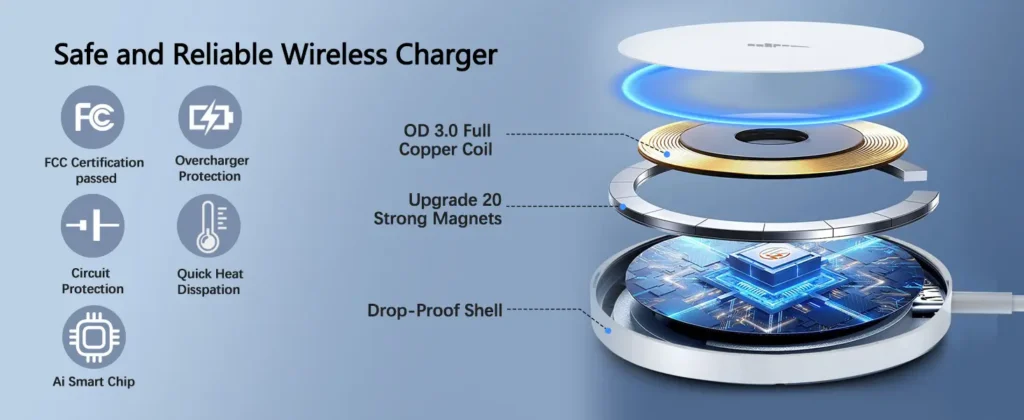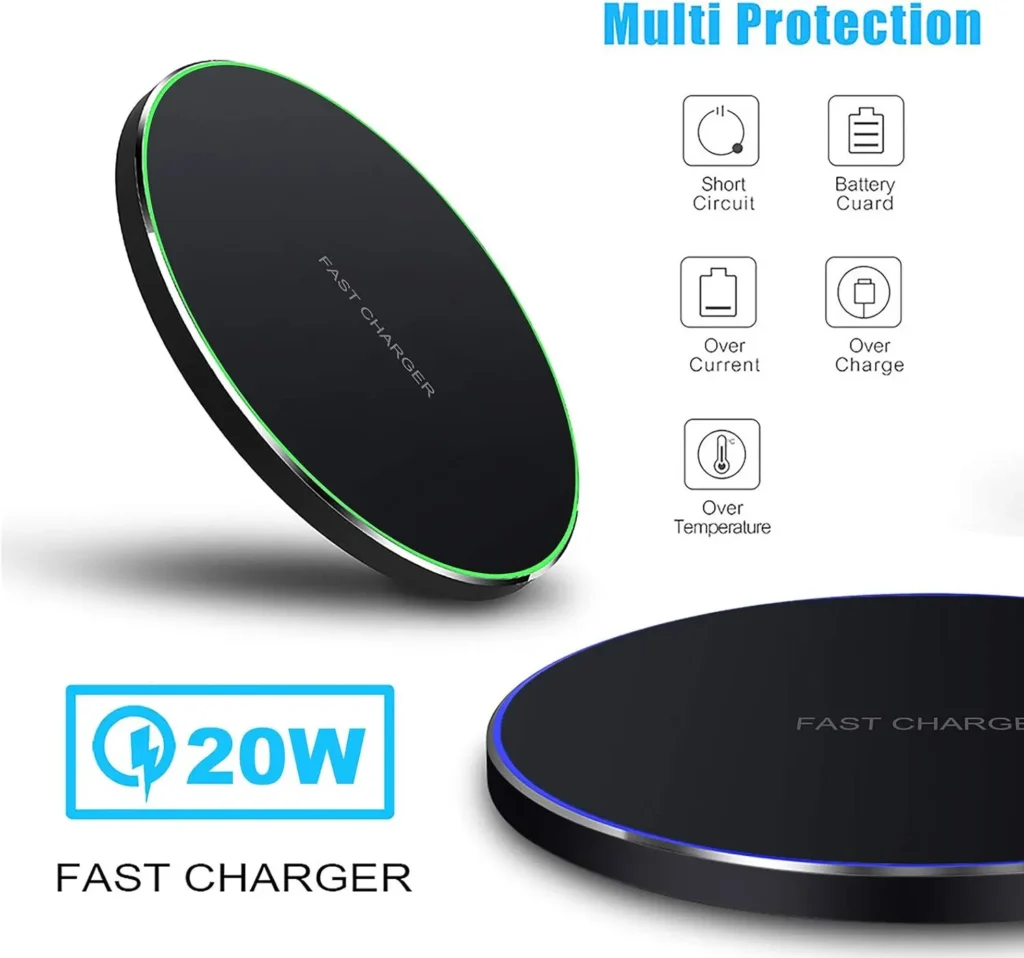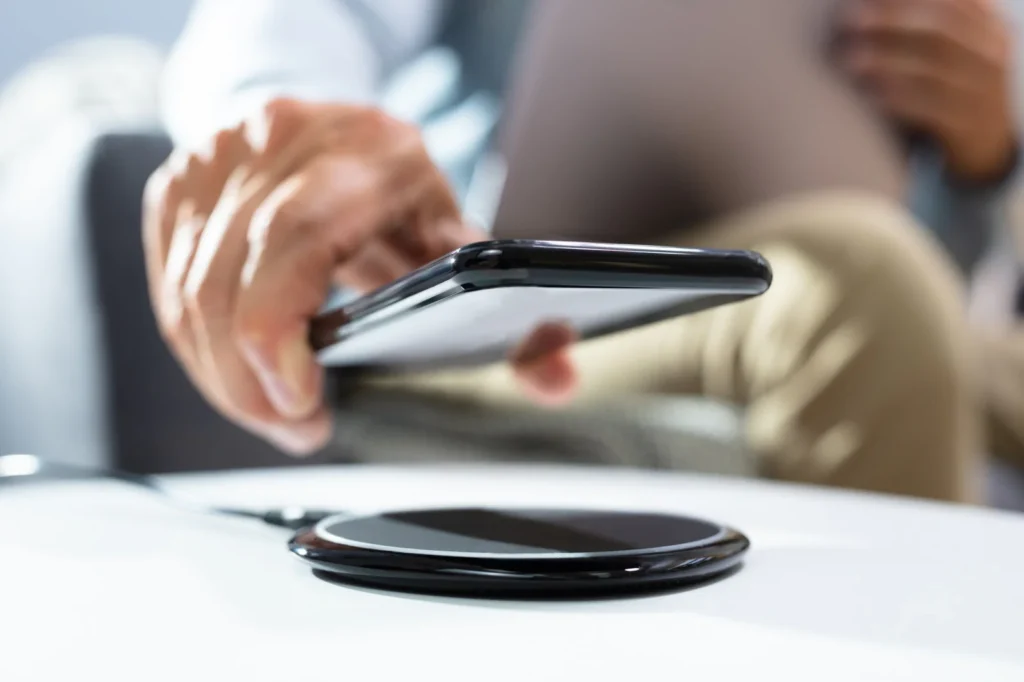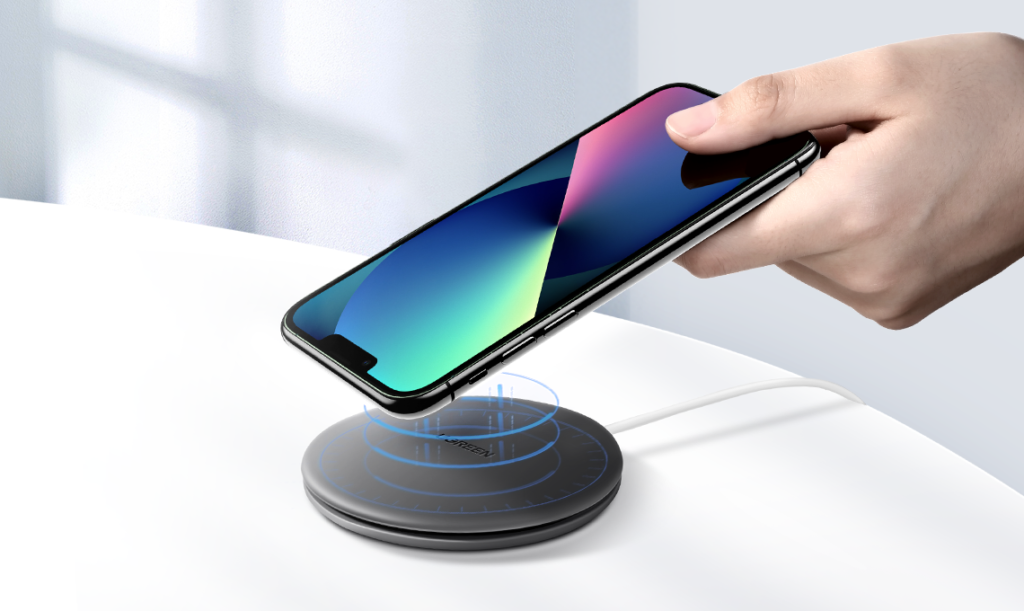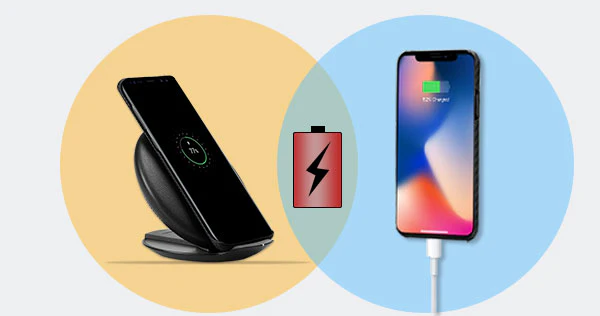As technology advances with each passing year, so does our interaction with the devices we use on a daily basis. One of these advancements, which really defines this generation, is the phenomenon of wireless charging: a revolutionary way to power your smartphone, tablet, or even electric toothbrush without bothering with annoying cords. Among the various wireless charging standards available today, Qi is the most adopted. But what exactly is this Qi standard, and why is it so important?
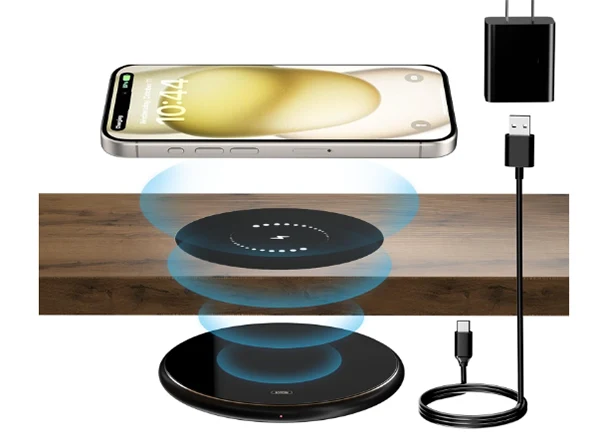
The Basics of Wireless Charging
Before we get into the minutest details regarding the Qi standard, let’s understand how wireless charging works. Wireless charging works on a principle called inductive charging, wherein energy is transferred between two coils through a magnetic field. It’s so convenient and hassle-free to keep your devices powered up without having to deal with tangled cables; you just have to place your device on a charging pad or surface.
However, different wireless charging systems are not always compatible with each other, and that’s where the Qi standard comes into place. The universal system makes sure that charging pads and devices from different makers will work seamlessly together to create an easy, consistent experience for users.
What Is the Qi Standard?
Qi is the standard of wireless charging developed by the Wireless Power Consortium. Pronounced “chee,” Qi broke onto the scene in 2008 and, since then, has become the default standard in wireless power transfer for smartphones and portable electronics. It was designed to introduce some consistency in wireless charging, thus ensuring that devices and chargers across different brands can easily work together.
The ultimate objective of Qi is to supply power safely, efficiently, and reliably without requiring any physical connectors or wires. That enables users to place their phones or other compatible devices on a Qi-enabled charging pad and have them charged.
How Does Qi Work?
The Qi charging technology uses a process of electromagnetic induction at its core. Let us deconstruct it into simple steps so that the whole process becomes clear:
- Power Supply: It has an inductive coil, which creates an alternation in the magnetic field when connected to the power source, on the charging station or the pad.
- Magnetic Field Transfer: The magnetic field created is invariably picked up by the receiving coil in the device, be it a phone, smartwatch, or tablet.
- Energy Conversion: The magnetic energy is converted to electrical energy in the receiving coil in your device to charge the battery.
For Qi to work effectively, both the charger and the device must be aligned. Most Qi chargers have some form of guidance, like lights, on how to place the device on the pad for optimal energy transfer.
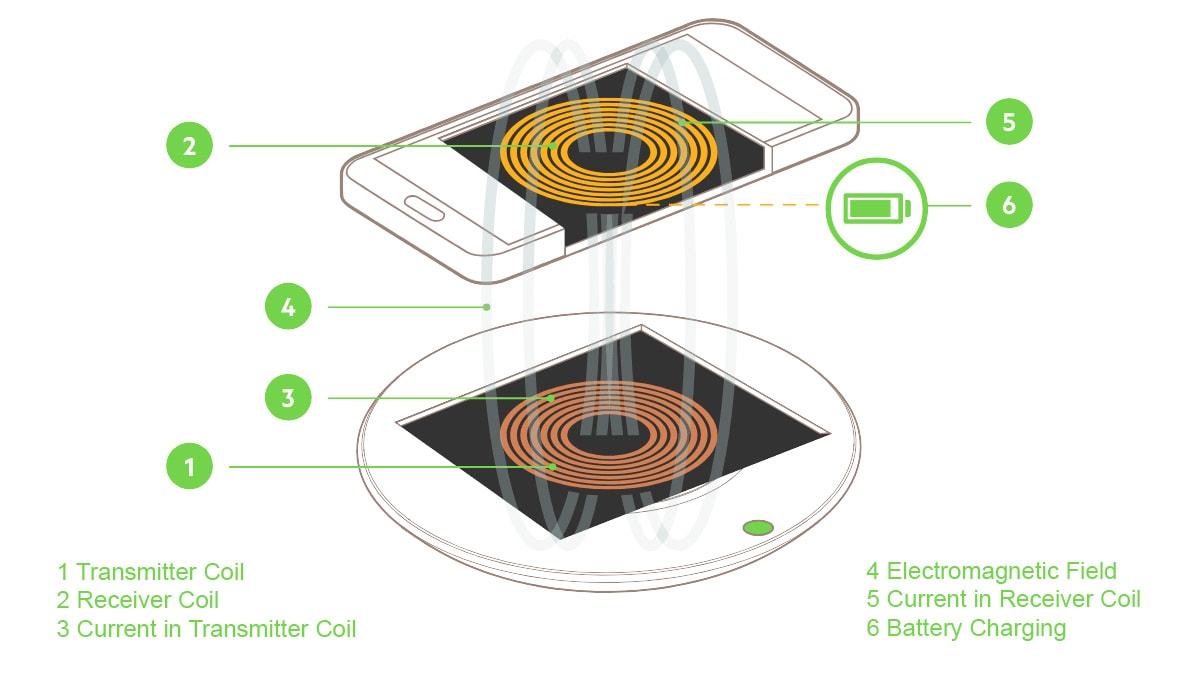
Why Is Qi So Popular?
One of the most compelling reasons Qi has spread so widely is the fact that Qi is universal: whereas earlier schemes for wireless charging were brand- and device-specific, the Qi standard ensures that devices and chargers will work across brands. Here’s why Qi has become so mainstream:
- Global Compatibility: Devices from Apple, Samsung, and Google, among other leading tech companies, all have Qi wireless charging capabilities, hence making them highly compatible across a wide range of smartphones, wearables, and even laptops. More and more devices are using the Qi wireless standard; if you have a Qi-enabled phone, then you can charge it on practically any Qi-compatible pad.
- Convenience: Qi makes charging easy and convenient. No more fiddling with charging cables, trying to find them or plug them in at weird angles. You could place as many devices as you want-on one compatible pad-smartphone, headphones, and even smartwatches-and have them charged with ease.
- Safety and Efficiency: The Qi standard integrates safety features that include over-voltage protection, temperature control, and foreign object detection to ensure safety and efficiency during the charging process.
- Industry Adoption: Qi has been adopted into many different industries, from smartphones to electric vehicles. Recently, for example, Qi’s wireless charging technology for electric vehicles was integrated by companies like BMW and Toyota. These have highly contributed to the significant growth of Qi.
Qi Vs. Other Wireless Charging Standards
Other wireless charging standards exist, such as PMA and A4WP. However, Qi has emerged as the leader in the industry. Here is why:
- Greater Support: Most device makers use Qi as the standard for wireless charging due to it being the most supported and widely used. It is integrated into furniture-like desks and car mounts and is capable of charging several devices all at once.
- Backward Compatibility: Qi can be very backward compatible. Newer charging pads can still be used by older devices; this helps the consumer if they do not want to have to purchase an entirely new set of accessories.
- Longer Range: While Qi actually works at a very short range-mostly up to 5 cm, or about 2 inches-it’s often been more practical in consumer environments, and recent developments aim to extend the charging range without compromising efficiency.
Future of Qi Charging Technology
Going forward, Qi wireless charging is likely to continue evolving. Some of the advances we could see in the near future include:
- Faster Charging: The technology is only bound to get better with time as manufacturers work their way around it, making the charging process even more efficient. Though today’s Qi charging tops out at 15W for some devices, expect improvements.
- Longer Distance Charging: Besides, the manufacturers are trying out methods for long-distance charging too. That means you would not necessarily need to place your phone on a charging pad, making it even more convenient.
- More Application Areas in New Devices: The concept of wireless charging would see its way into more and more products once the concept got popular. Starting from laptops and game consoles to a number of other consumer electronic products.
Can Qi Become Part of Your Daily Life?
You may well have already used Qi wireless charging, provided you have a device compatible with the Qi standard, that is. It’s a growing part of our lives, and further adoption of the technology should ensue. The technology will further become indispensable. Be it charging your smartphone at home, using public charging pads in cafes, or having wireless charging pads in your car, Qi grants the convenience and ease which cannot be rivaled by traditional hard-wired charging.

Conclusion
Qi Standard is the backbone of modern wireless charging, making it seamless and compatible with most of the wide varieties of devices. With convenience and safety features, finding growing inroads into several industries, one can understand why Qi wireless charging is going to be an essential factor in the future of consumer technology.
Whether you’re a first-time user of wireless charging or a long-time one, understanding the Qi standard will help you make the best decisions for your devices, accessories, and everyday tech needs. The future is wireless, and Qi is leading the way!
